#bitesizedcodingwithyoungwonks ผลการค้นหา
A list is used to store multiple #items. Shared here is an example of a list called Fruits. Follow us for more such #bitesizedcodingwithYoungWonks #pythonprogramming #kidscoding #lists #learningresources #pythoncheatsheet #Python #coding #programming
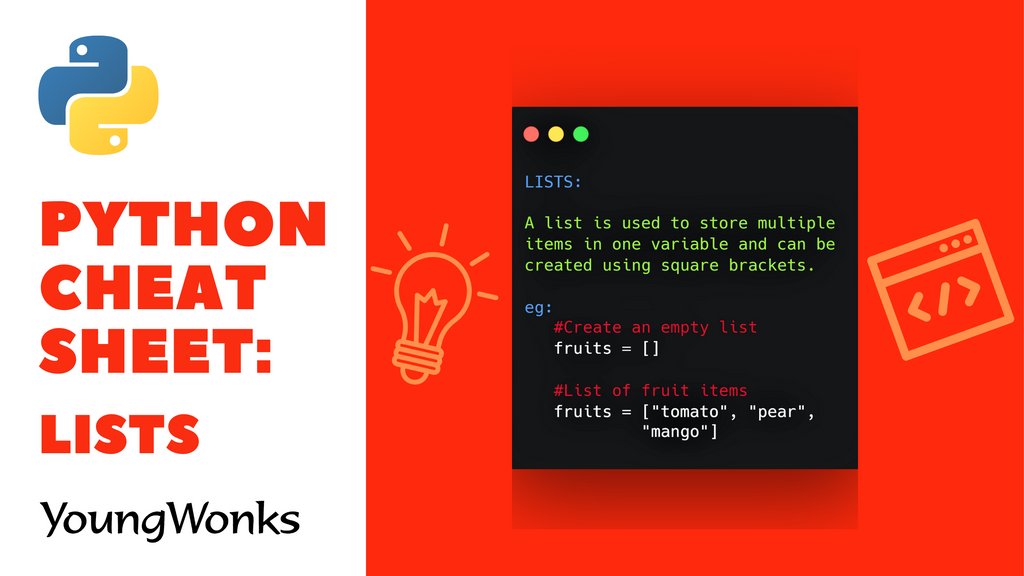
The #greater than (>) checks if the left #operand is greater than the right. Shared here is an example; follow us for more #bitesizedcodingwithYoungWonks #greaterthanoperator #pythonprogramming #kidscoding #learningresources #onlinelearning #STEM #Python #STEMkids #learnPython
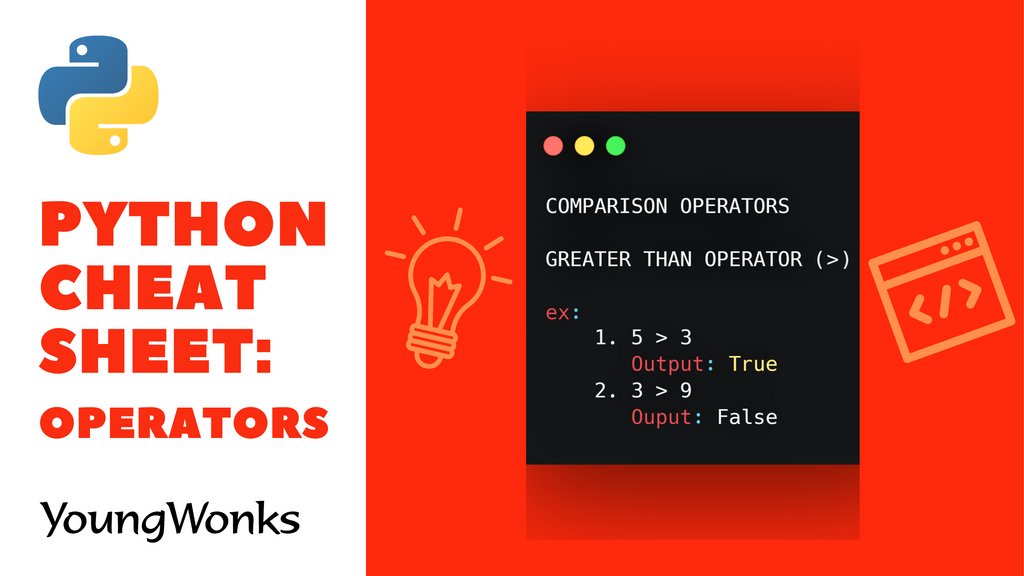
The greater than or equal to operator (>=) checks if the left #operand is greater than or equal to the right operand. Shared here is an eg. #operators #bitesizedcodingwithYoungWonks #pythonprogramming #kidscoding #learningresources #pythoncheatsheet #learntocode #STEMkids #python
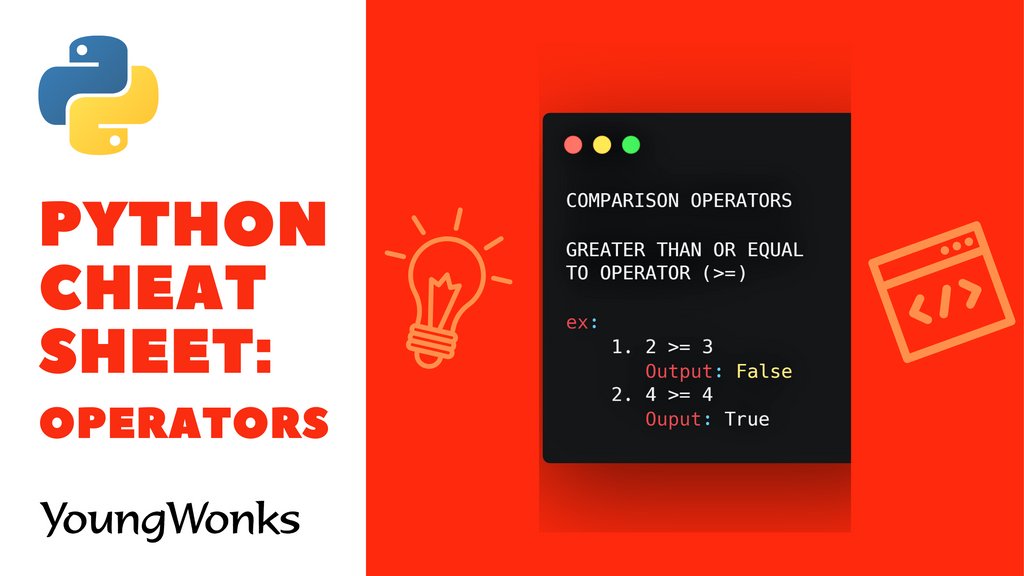
A #variable is like a container for storing data values. Shared here are a few examples. #datatypes #bitesizedcodingwithYoungWonks #pythonprogramming #codingforkids #learningresources #kidscoding #operators #python #pythoncheatsheet #onlinelearning #STEMkids

The #andoperator (and) returns True only if both of its #operands, the left and the right operands' conditions are True. Shared here is an eg. #bitesizedcodingwithYoungWonks #pythonprogramming #codingforkids #learningresources #python #codewithpython #onlinelearning #cheatsheet

The #inoperator checks if a value exists in a sequence or not. It evaluates to true if it finds the value in the specified sequence & false otherwise. Shared here is an eg. #bitesizedcodingwithYoungWonks #kidscoding #programming #learningresources #operators #python #STEMkids
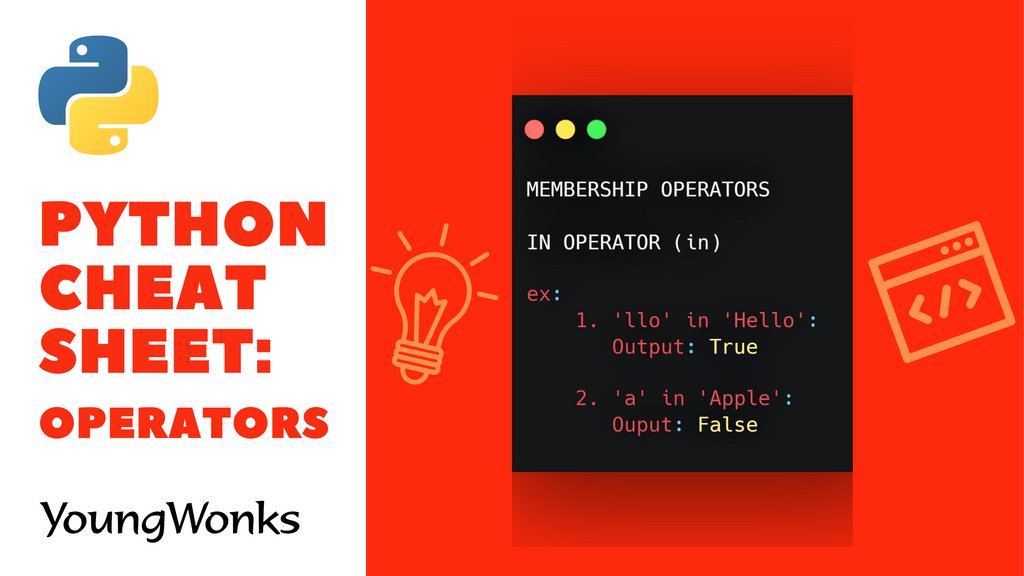
The #notinoperator is used to check if a value doesn't belong to a sequence. It evaluates to false if it finds the value in the specified sequence & true otherwise. Shared here is an eg. #bitesizedcodingwithYoungWonks #codingforkids #learningresources #operators #python #STEMkids

The #notoperator returns the negation of the result of an #operation. Shared here is an eg. Learn more at l8r.it/hUEy /#bitesizedcodingwithYoungWonks #pythonprogramming #codingforkids #learningresources #operator #python #pythoncheatsheet #onlinelearning
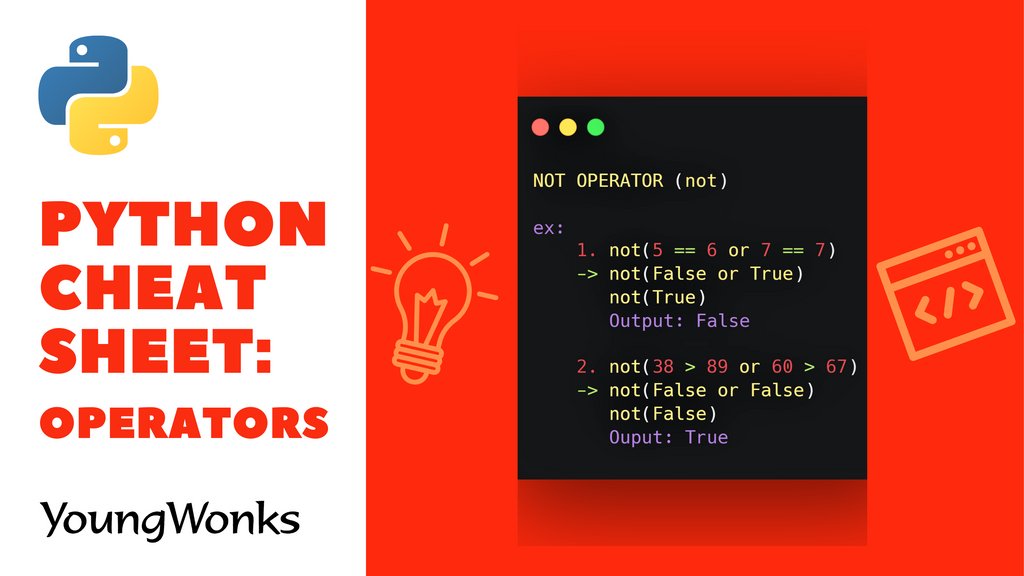
Something went wrong.
Something went wrong.
United States Trends
- 1. The BONK 278K posts
- 2. FINALLY DID IT 609K posts
- 3. Namjoon 66.1K posts
- 4. Good Saturday 21.6K posts
- 5. #albatross 3,391 posts
- 6. #AAA2025 130K posts
- 7. The EU 366K posts
- 8. #SaturdayVibes 2,766 posts
- 9. #launch 3,270 posts
- 10. #raven 3,654 posts
- 11. Aston Villa 34.3K posts
- 12. Cocona 142K posts
- 13. Gunther 26.5K posts
- 14. Flag Day 3,547 posts
- 15. 5 YEARS WITH MC WONYOUNG 18.3K posts
- 16. YUNHO 30.3K posts
- 17. Dizzy 6,624 posts
- 18. Tulane 14.8K posts
- 19. fnaf 2 67.1K posts
- 20. St. Nicholas 6,136 posts

